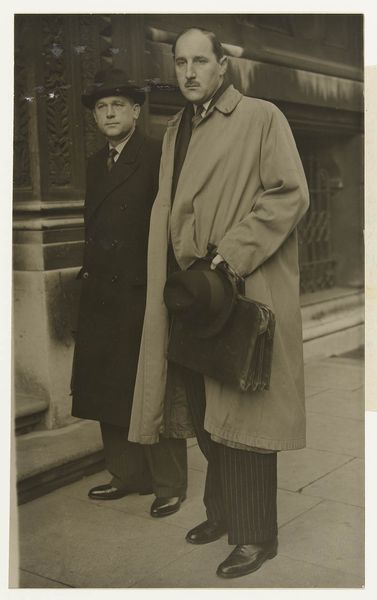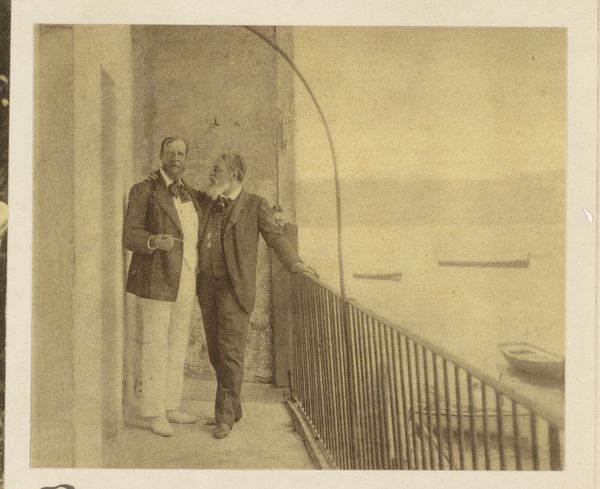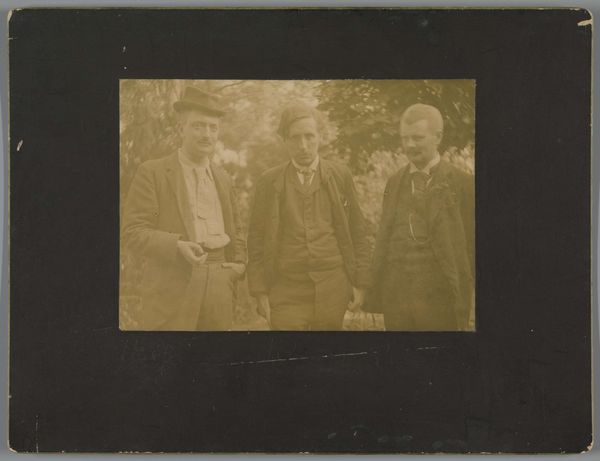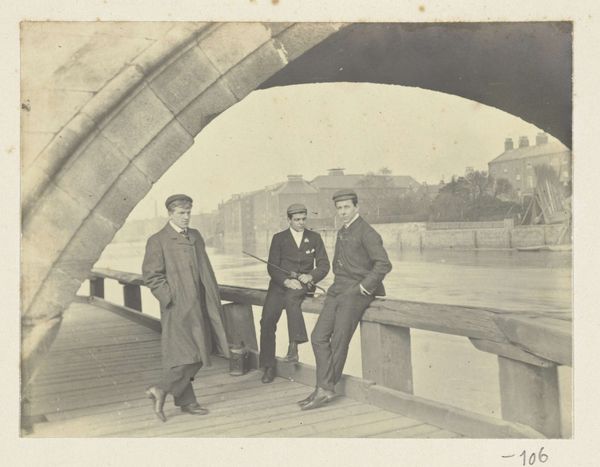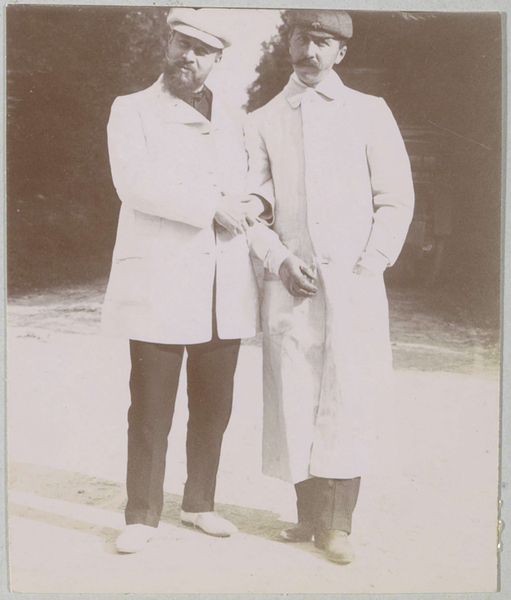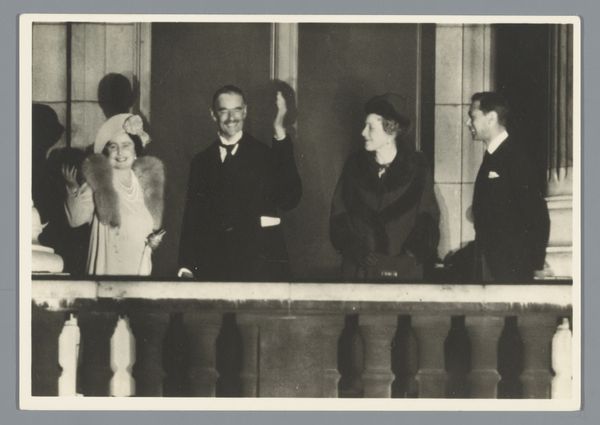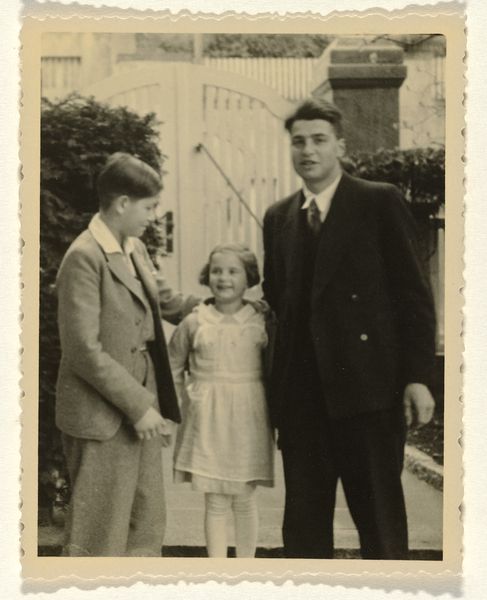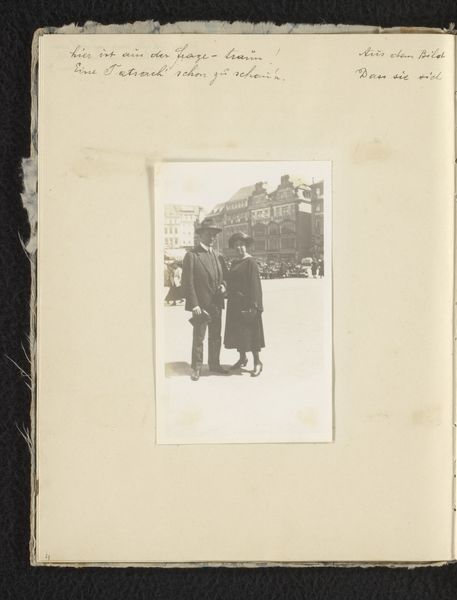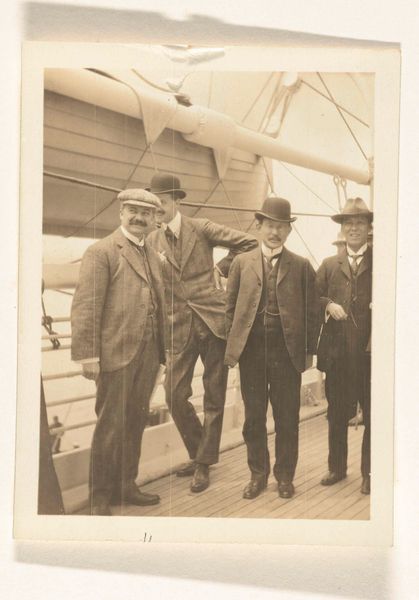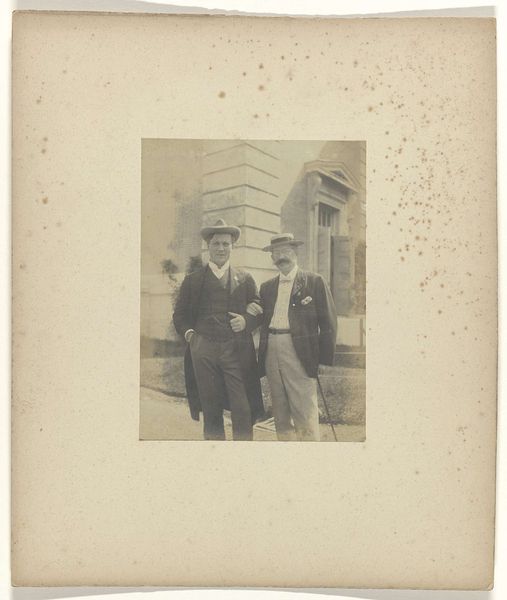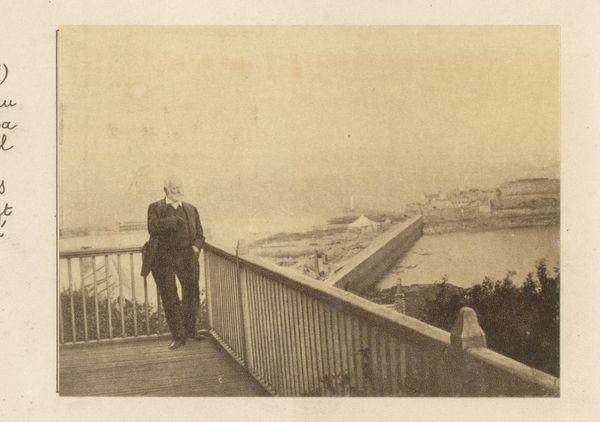
Eugen Wachenheimer als jongeman met een onbekende man op een balkon, 1906-1926 1906 - 1926
0:00
0:00
photography
#
portrait
#
photography
#
historical photography
#
cityscape
#
modernism
Dimensions: height 100 mm, width 80 mm
Copyright: Rijks Museum: Open Domain
Editor: Here we have a photograph titled "Eugen Wachenheimer as a young man with an unknown man on a balcony, 1906-1926." It's a fascinating look into the past; there's a formality to the composition, a certain stiffness in their poses. What can you tell me about this piece? Curator: This image, precisely because of that "stiffness," provides a lens into early 20th-century German society. These are men of a certain class, identifiable by their suits, their balcony view overlooking a cityscape. What power dynamics are at play in the relationship between these two men, and how are they reflected in this formal pose? How does the act of posing for this photograph influence our perception of identity and belonging in this historical moment? Editor: That’s a very different perspective than what I had originally considered. It strikes me as very ordinary but your suggestion gives the photograph layers I missed entirely. The concept of power dynamics, especially, makes me wonder. Do you think the architecture in the background plays a role? Curator: Absolutely! The architecture anchors them in a specific time and place and hints at institutional power. Notice how the men, in their suits, almost mirror the rigid architecture behind them, becoming a part of that social structure. How does that affect your reading of their individual identities? Editor: It makes them seem less individualistic and more representative of a class or status, and I guess they can reflect how institutional buildings are coded with wealth, tradition, and long histories. The city in the backdrop could also signify progress and modernity. It’s compelling to consider photography as not just a reflection of reality, but a construction of social identities. Curator: Precisely. Understanding this allows us to see how photography can be both a mirror and a tool in shaping social perceptions. Editor: That really does reshape my understanding of early modernist photography. It is definitely much more political than it seems at first glance. Thank you for that shift of perspective.
Comments
No comments
Be the first to comment and join the conversation on the ultimate creative platform.
